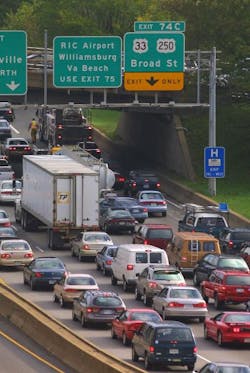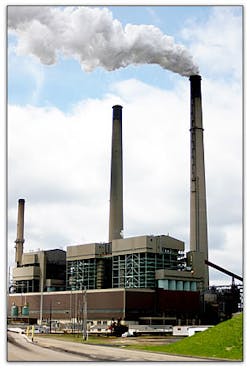If the U.S. economy doesn’t go negative on us, of course.
And therein lies the problem. While freight took a nice healthy bounce in November – helping bolster future trend lines – lots of other indicators took a turn in the opposite direction.
A look at the U.S. gross domestic product (GDP) growth in the third quarter shows why the economy is exuding all sorts of schizophrenic signals.
Consulting firm IHS Global Insight noted that the upward revision of third-quarter GDP growth by Bureau of Economic Analysis (BEA) to 2.7% from 2% certainly looks good on paper. Yet that extra growth is entirely due to faster inventory accumulation, not actual economic growth, and the BEA also lowered its initial estimates for consumer spending at the same time.
IHS also noted that, in the third quarter this year, business capital equipment spending registered its first quarterly contraction since the recession “trough” in 2009. Indeed, the Federal Reserve’s latest Beige Book report indicated that regional business activity is being held to a “measured” pace in part by fiscal cliff uncertainty and the impact of Hurricane Sandy, the firm said.
“Stronger third-quarter GDP growth not built to last,” IHS stressed in its latest economic forecast. “Therefore, we expect fourth-quarter GDP growth of only around 1%.”
The most recent Institute for Supply Management (ISM) survey of the U.S. manufacturing industry unearthed some unwelcome factoids as well.The group’s critical PMI metric registered 49.5% in November; a decrease of 2.2 percentage points from October's reading of 51.7%, indicating contraction in manufacturing for the fourth time in the last six months. This month's PMI reading is also at its lowest level since July 2009 – back during the “Great Recession” mind you – when it hit 49.2%, noted Bradley Holcomb (at left), chairman of the ISM’s manufacturing business survey committee.
Other metrics were just as unsavory, with the New Orders Index registering 50.3%, a decrease of 3.9 percentage points from October, and the Employment Index registering 48.4%, a decrease of 3.7 percentage points – that index's lowest reading since September 2009, when it hit 47.8%.
Holcomb added that comments from the survey panel this month generally indicated that the second half of the year continues to show a slowdown in demand, with respondents also expressing concern over how and when the fiscal cliff issue will be resolved.
This anonymous quote from one the survey participants – a fabricated metals manufacturer – shows how serious the situation is: “The fiscal cliff is the big worry right now. We will not look toward any type of expansion until this is addressed; if the program that is put in place is more taxes and big spending cuts — which will push us toward recession — forget it.”
The latest CFO Outlook Survey conducted by Financial Executives International (FEI) and Baruch College's Zicklin School of Business fleshes out how such worries are retarding business investment, which could potentially stifle freight growth next year.
FEI’s survey found that chief financial officers, especially in the U.S., continue to remain uncertain about the future of the economy and their business, as well as the expectation of a recovery amid looming threats to the Eurozone and the U.S. fiscal cliff.Respondents FEI’s quarterly survey, which polls CFOs of public and private businesses on their economic and business confidence, revealed that U.S. CFOs have grown increasingly doubtful that the U.S. will experience a recovery in the next year.
When asked about the timeframe that a U.S. economic recovery would take place, 53% believed a recovery would be delayed until at least 2014; up from 38% in the second quarter who thought a recovery would remain that far out. The number of CFOs who believed the U.S. is already in the midst of a recovery stayed steady (26% versus 22% in the second quarter) but only 13% now trust the U.S. will recover at any point in 2013.
More than three-quarters of U.S. CFOs (76%) in the survey stated that their expectations of U.S. economic growth will be impacted by tax increases and the potential for “sequestration,” the automatic spending cuts that will largely fall upon the U.S. military. A similar percentage of CFOs (74%) are bracing for impact of the scheduled expiration of Bush-era tax cuts at the close of 2012.“Post-election, CFOs in the U.S. are expressing alarming concerns over the threat of a fiscal cliff and sequestration, which has a resounding impact on their prospects for economic growth,” said Marie Hollein (at left), FEI’s president and CEO.
“Respondents to the survey seem to support the postponing of sequestration cuts and extending Bush tax cuts to avoid pushing the U.S. into a potential recession,” she added. “With the timeline for a decision by the current Congress drawing closer, CFOs are growing more uncertain that the U.S. economy will recover in the near term.”
“CFOs appear to be hunkering down in preparation for continued economic stagnation in the U.S. and Europe, as evidenced by low levels of optimism about the economy," noted Linda Allen, professor of economics and finance at Baruch’s Zicklin School of Business.
"The survey suggests that the CFOs expect a delay in the U.S. economic recovery to 2014 due to three major areas of concern,” she pointed out. “First, uncertainty about European stability and the fiscal cliff in the U.S., second, high employment costs, with 93% of U.S. CFOs expecting increased employee healthcare costs, and third, weakening revenue and earnings expectations, resulting in reduced growth and acquisition opportunities.”
In a word: Ouch! That’s the kind of outlook that doesn’t bear good tidings for freight in the next year. Then again, things could change in a more positive direction – and hopefully rapidly at that – if the fiscal cliff is averted in the end.
We’ve got less than 30 days to find out.







